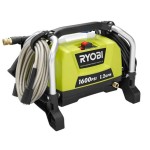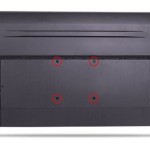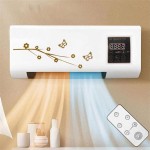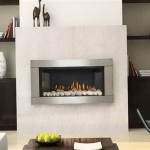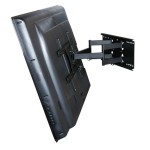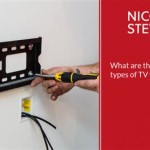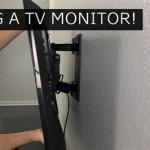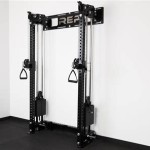Tilting TV Wall Mount 55 Inch: A Comprehensive Guide
The selection and installation of a tilting TV wall mount for a 55-inch television require careful consideration of various factors to ensure both safety and an optimal viewing experience. This article provides a detailed overview of these considerations, encompassing mount types, compatibility, installation procedures, and troubleshooting tips.
A tilting TV wall mount offers the advantage of adjusting the vertical angle of the television, which can be particularly beneficial in situations where the screen is mounted higher than eye level. This adjustability helps to reduce glare, improve viewing angles, and enhance overall picture clarity. The selection process should begin with verifying compatibility between the mount and the specific 55-inch TV model.
Key Point 1: Understanding Compatibility and Specifications
Before purchasing a tilting TV wall mount, it is crucial to verify its compatibility with the intended 55-inch television. This involves examining the TV's Video Electronics Standards Association (VESA) mounting pattern, weight, and size limitations.
The VESA mounting pattern is a standardized set of dimensions that dictates the spacing of the mounting holes on the back of the television. This pattern is expressed in millimeters, such as 200x200mm or 400x400mm. The user must consult the television's user manual or the manufacturer's website to ascertain the correct VESA pattern. The chosen mount must support this specific VESA pattern to ensure a secure and proper fit. Failure to match the VESA pattern can result in an unstable or even unusable mounting setup, potentially damaging the television or causing it to fall.
Weight capacity is another critical specification. The mounting bracket must be capable of supporting the weight of the 55-inch television. Overloading the mount can lead to structural failure and pose a significant safety hazard. The television's weight is typically indicated in its specifications. It is advisable to select a mount with a weight capacity that exceeds the television's weight by a comfortable margin (e.g., 10-20%) to account for potential fluctuations and ensure long-term reliability.
Physical dimensions also require consideration. While most 55-inch TVs will fall within a standard size range, it’s best to double check the mount specifications and ensure the bracket is the appropriate physical size relative to the TV’s back panel. A mount that is too small may not properly distribute the weight, while a mount that is too large could be aesthetically unappealing or interfere with access to ports.
Furthermore, the selected mount should ideally be constructed from durable materials such as heavy-gauge steel. This will provide enhanced strength and stability, contributing to the overall safety and longevity of the installation. Mounts constructed from lower-quality materials may be more prone to bending, warping, or breaking under the weight of the television.
Key Point 2: Installation Procedures and Best Practices
Proper installation of a tilting TV wall mount is paramount for ensuring both the safety of the installation and the optimal viewing experience. The installation process typically involves several steps, each requiring careful attention to detail.
The first step is selecting a suitable location for the television. The location should provide an unobstructed view of the screen from the primary viewing area. It is also crucial to consider the presence of electrical outlets and cable connections in the vicinity. Furthermore, the wall itself must be structurally sound and capable of supporting the weight of the television and the mount. Drywall alone is generally not sufficient. The mount must be securely anchored to wall studs or a reinforced concrete or masonry wall.
Once the location has been determined, the wall studs must be located and marked. A stud finder is a valuable tool for this purpose. If mounting to concrete or masonry, ensure the correct type of masonry anchors are used and are rated to hold the weight of the TV. Precise location of the studs is essential for a secure and stable installation. The mounting bracket should be aligned with the marked studs and securely attached using appropriate lag bolts or screws. Using the correct size and type of fasteners is critical to prevent the mount from pulling away from the wall over time.
After the wall bracket is securely mounted, the mounting arms or plates must be attached to the back of the television using the VESA-compliant mounting screws. It is important to use the correct size and length of screws to avoid damaging the television's internal components. The screws should be tightened securely, but not over-tightened, as this can strip the threads or crack the television's housing.
Finally, the television, with the attached mounting arms, is carefully lifted and connected to the wall bracket. This step often requires the assistance of two people, particularly for larger or heavier televisions. The mounting arms are typically secured to the wall bracket using locking mechanisms or screws. It is essential to ensure that these mechanisms are properly engaged to prevent the television from accidentally dislodging from the mount.
Leveling the television is crucial for achieving a visually appealing and balanced installation. A level should be used to ensure that the television is perfectly horizontal. Minor adjustments can be made by slightly loosening the mounting screws and repositioning the television as needed.
Cable management is another important consideration. Loose cables dangling from the television can be unsightly and potentially hazardous. Cable ties, cable channels, or wall plates can be used to organize and conceal the cables, creating a cleaner and more professional-looking installation. Excess cable length should be neatly coiled and secured to prevent tangling or interference.
Key Point 3: Troubleshooting and Common Issues
Despite careful planning and execution, some problems can still arise during or after the installation of a tilting TV wall mount. Being aware of common issues and their potential solutions can help to avoid frustration and ensure a successful outcome.
One common issue is difficulty locating wall studs. Stud finders can be unreliable, particularly on walls with uneven surfaces or complex construction. If a stud finder fails to accurately locate the studs, tapping on the wall can sometimes help. Studs typically produce a solid sound when tapped, while hollow areas between studs produce a more resonant sound. Alternatively, drilling small pilot holes can help to confirm the location of the studs without causing significant damage to the wall.
Another potential problem is using the wrong size or type of screws. Using screws that are too short or too thin can compromise the stability of the installation, while using screws that are too long can damage the television's internal components. It is essential to carefully consult the mount's instructions and the television's user manual to determine the correct screw specifications. If in doubt, it is always best to err on the side of using slightly larger screws for enhanced security.
Leveling issues are also common. Even if the wall bracket is initially leveled, the television may still appear to be slightly tilted after installation. This can be caused by imperfections in the wall or minor variations in the mounting arms. Minor adjustments can be made by loosening the mounting screws and repositioning the television as needed. If the tilt is significant, it may be necessary to re-level the wall bracket itself.
Cable management can also present challenges. Hiding cables behind the television can be difficult, particularly if there are numerous cables to contend with. Cable ties, cable channels, and wall plates can be used to organize and conceal the cables, but it may be necessary to drill holes in the wall to route the cables through. When drilling holes, it is important to avoid hitting electrical wires or plumbing pipes.
Finally, the tilting mechanism itself can sometimes malfunction. If the television is difficult to tilt or if the tilting mechanism feels loose or unstable, it may be necessary to tighten the adjustment screws or lubricate the mechanism. If the problem persists, it may be necessary to contact the mount manufacturer for assistance.
In summary, selecting and installing a tilting TV wall mount for a 55-inch television requires a thorough understanding of compatibility requirements, proper installation techniques, and common troubleshooting procedures. Paying close attention to these factors will ensure a safe, secure, and visually appealing installation that enhances the viewing experience.
Selecting the right mount involves verifying VESA compatibility, checking weight capacity, and ensuring structural integrity. Installation necessitates precise stud location, secure attachment of the wall bracket and mounting arms, and careful leveling. Addressing potential issues like stud finding difficulties or leveling discrepancies contributes to a successful overall outcome.
By adhering to these guidelines, users can confidently install a tilting TV wall mount for their 55-inch television, optimizing their viewing environment and enhancing their entertainment experience.

Swiftmount Wall Mount For Flat Panel Display

Chief Fusion X Large Tilt Wall Mount For 55 100 Inch Displays Tv Vesa

B Tech Large Tilt Tv Wall Mount Universal Bt8431

Usx Mount Medium Tilting Tv Wall Fits For 26 In 55 Flat Screen Tvs Htm006 The Home

Mount It Tilting Tv Wall

Crimson Large Tilt Tv Wall Mount Universal T55

Full Motion Tv Wall Mount 32 55 Inch 77lb 35kg Vesa Displays Low Profile Universal Flat Screen Heavy Duty Adjustable Tilt Swivel

Tv Wall Mount For 32 55 Inch Tilt Up To 110 Lbs Vesa 100 400mm Satmaximum

Full Motion Corner Tv Wall Mount It

Rocketfish Tilting Tv Wall Mount For Most 32 55 Tvs Black Rf Htmt15 Best

